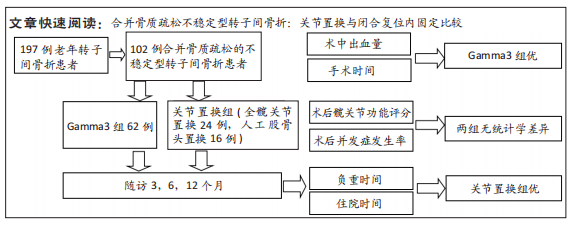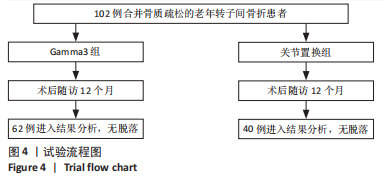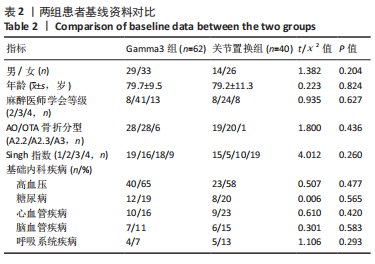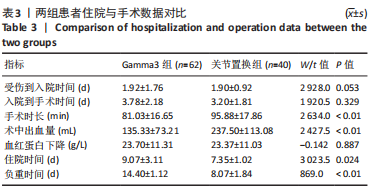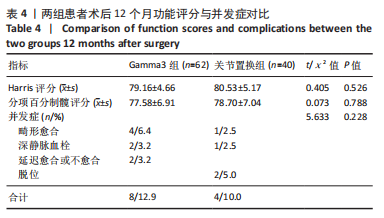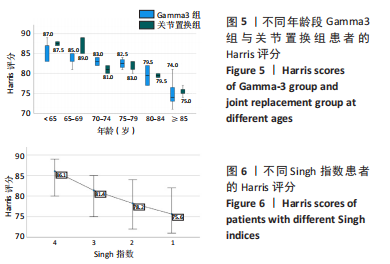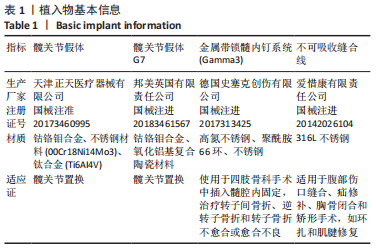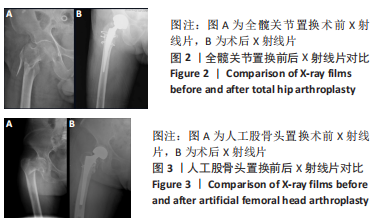[1] DHANWAL DK, DENNISON EM, HARVEY NC, et al. Epidemiology of hip fracture: Worldwide geographic variation. Indian J Orthop. 2011;45(1): 15-22.
[2] LEWIS SR, MACEY R, PARKER MJ, et al. Arthroplasties for hip fracture in adults. Cochrane Database Syst Rev. 2022;2(2):Cd013410.
[3] NIKOLAOU VS, PAPATHANASOPOULOS A, GIANNOUDIS PV. What’s new in the management of proximal femoral fractures? Injury. 2008;39(12): 1309-1318.
[4] FICHMAN SG, MäKINEN TJ, SAFIR O, et al. Arthroplasty for unstable pertrochanteric hip fractures may offer a lower re-operation rate as compared to cephalomedullary nailing. Int Orthop. 2016;40(1):15-20.
[5] GOTFRIED Y. Integrity of the lateral femoral wall in intertrochanteric hip fractures: an important predictor of a reoperation. J Bone Joint Surg Am. 2007;89(11):2552-2553; author reply 2553.
[6] AKAN K, CIFT H, OZKAN K, et al. Effect of osteoporosis on clinical outcomes in intertrochanteric hip fractures treated with a proximal femoral nail. J Int Med Res. 2011;39(3):857-865.
[7] LOBO-ESCOLAR A, JOVEN E, IGLESIAS D, et al. Predictive factors for cutting-out in femoral intramedullary nailing. Injury. 2010;41(12): 1312-1316.
[8] HAENTJENS P, CASTELEYN PP, OPDECAM P. Hip arthroplasty for failed internal fixation of intertrochanteric and subtrochanteric fractures in the elderly patient. Arch Orthop Trauma Surg. 1994;113(4):222-227.
[9] UCPUNAR H, CAMURCU Y, ÇöBDEN A, et al. Comparative evaluation of postoperative health status and functional outcome in patients treated with either proximal femoral nail or hemiarthroplasty for unstable intertrochanteric fracture. J Orthop Surg (Hong Kong). 2019;27(3): 2309499019864426.
[10] JU JB, ZHANG PX, JIANG BG. Hip Replacement as Alternative to Intramedullary Nail in Elderly Patients with Unstable Intertrochanteric Fracture: A Systematic Review and Meta-Analysis. Orthop Surg. 2019; 11(5):745-754.
[11] SINGH M, NAGRATH AR, MAINI PS. Changes in trabecular pattern of the upper end of the femur as an index of osteoporosis. J Bone Joint Surg Am. 1970;52(3):457-467.
[12] 芮敏, 顾家烨, 朱屹, 等. 双动全髋关节在髋关节置换中的应用进展[J]. 中华骨与关节外科杂志,2021,14(8):717-721.
[13] 徐又佳, 高焱, 刘功稳. 骨质疏松性髋部骨折的治疗和管理策略[J]. 中国骨质疏松杂志,2019,25(5):585-589.
[14] GONG XF, LI XP, ZHANG LX, et al. Current status and distribution of hip fractures among older adults in China. Osteoporos Int. 2021;32(9): 1785-1793.
[15] ZHANG C, FENG J, WANG S, et al. Incidence of and trends in hip fracture among adults in urban China: A nationwide retrospective cohort study. PLoS Med. 2020;17(8):e1003180.
[16] MARSH JL, SLONGO TF, AGEL J, et al. Fracture and dislocation classification compendium - 2007: Orthopaedic Trauma Association classification, database and outcomes committee. J Orthop Trauma. 2007;21(10 Suppl):S1-S133.
[17] ZUCKERMAN JD. Hip fracture. N Engl J Med. 1996;334(23):1519-1525.
[18] NIU E, YANG A, HARRIS AH, et al. Clin Orthop Relat Res. 2015;473(11): 3647-3655.
[19] LINDSKOG DM, BAUMGAERTNER MR. Unstable intertrochanteric hip fractures in the elderly. J Am Acad Orthop Surg. 2004;12(3):179-190.
[20] YANG YH, WANG YR, JIANG SD, et al. Proximal femoral nail antirotation and third-generation Gamma nail: which is a better device for the treatment of intertrochanteric fractures? Singapore Med J. 2013;54(8): 446-450.
[21] DOCQUIER PL, MANCHE E, AUTRIQUE JC, et al. Complications associated with gamma nailing. A review of 439 cases. Acta Orthop Belg. 2002;68(3):251-257.
[22] 赵晓涛, 张殿英, 郁凯, 等. 股骨近端防旋髓内钉固定治疗股骨转子间骨折的失效原因分析[J]. 中华创伤骨科杂志,2021,23(3):202-208.
[23] SIDHU AS, SINGH AP, SINGH AP, et al. Total hip replacement as primary treatment of unstable intertrochanteric fractures in elderly patients. Int Orthop. 2010;34(6):789-792.
[24] YOO JI, HA YC, LIM JY, et al. Early Rehabilitation in Elderly after Arthroplasty versus Internal Fixation for Unstable Intertrochanteric Fractures of Femur: Systematic Review and Meta-Analysis. J Korean Med Sci. 2017;32(5):858-867.
[25] 吴贵佑, 于前进, 朱红伟, 等. 股骨头置换与内固定治疗高龄不稳定转子间骨折的比较研究[J]. 中国骨伤,2021,34(10):895-900.
[26] BONNAIRE F, LEIN T, FüLLING T, et al. Reduced complication rates for unstable trochanteric fractures managed with third-generation nails: Gamma 3 nail versus PFNA. Eur J Trauma Emerg Surg. 2020;46(5):955-962.
[27] SHU WB, ZHANG XB, LU HY, et al. Comparison of effects of four treatment methods for unstable intertrochanteric fractures: A network meta-analysis. Int J Surg. 2018;60:173-181.
[28] SOCCI AR, CASEMYR NE, LESLIE MP, et al. Implant options for the treatment of intertrochanteric fractures of the hip: rationale, evidence, and recommendations. Bone Joint J. 2017;99-b(1):128-133.
[29] HUANG G, ZHANG M, QU Z, et al. Fixation options for reconstruction of the greater trochanter in unstable intertrochanteric fracture with arthroplasty. Medicine (Baltimore). 2021;100(26):e26395.
[30] LEE KH, LEE DH, NOH JH, et al. Is rigid fixation of the greater trochanter necessary for arthroplasty of intertrochanteric fractures? Orthop Traumatol Surg Res. 2019;105(1):41-45.
[31] TANG P, HU F, SHEN J, et al. Proximal femoral nail antirotation versus hemiarthroplasty: a study for the treatment of intertrochanteric fractures. Injury. 2012;43(6):876-881.
[32] LIU XZ, YANG W, YANG SH, et al. Total hip arthroplasty for treatment of elderly patients with comminuted intertrochanteric fracture accompanied by femoral head necrosis. Chin J Traumatol. 2008;11(6): 359-363.
[33] TORO G, POLA E, MIRANDA R, et al. Extracapsular femoral neck fractures treated with total hip arthroplasty: identification of a population with better outcomes. Orthop Rev (Pavia). 2022;14(6): 38576.
[34] MäKINEN TJ, GUNTON M, FICHMAN SG, et al. Arthroplasty for Pertrochanteric Hip Fractures. Orthop Clin North Am. 2015;46(4):433-444. |
